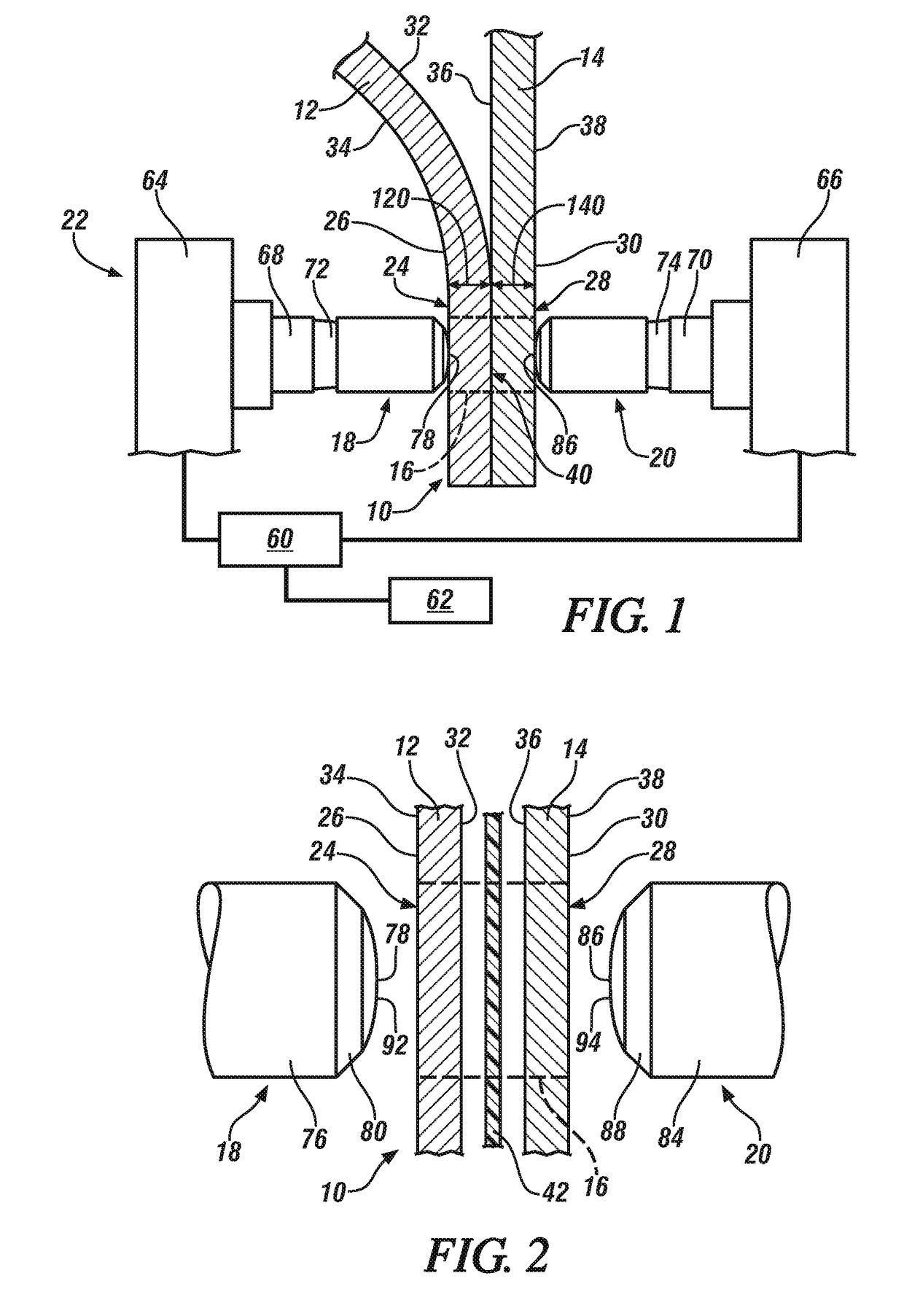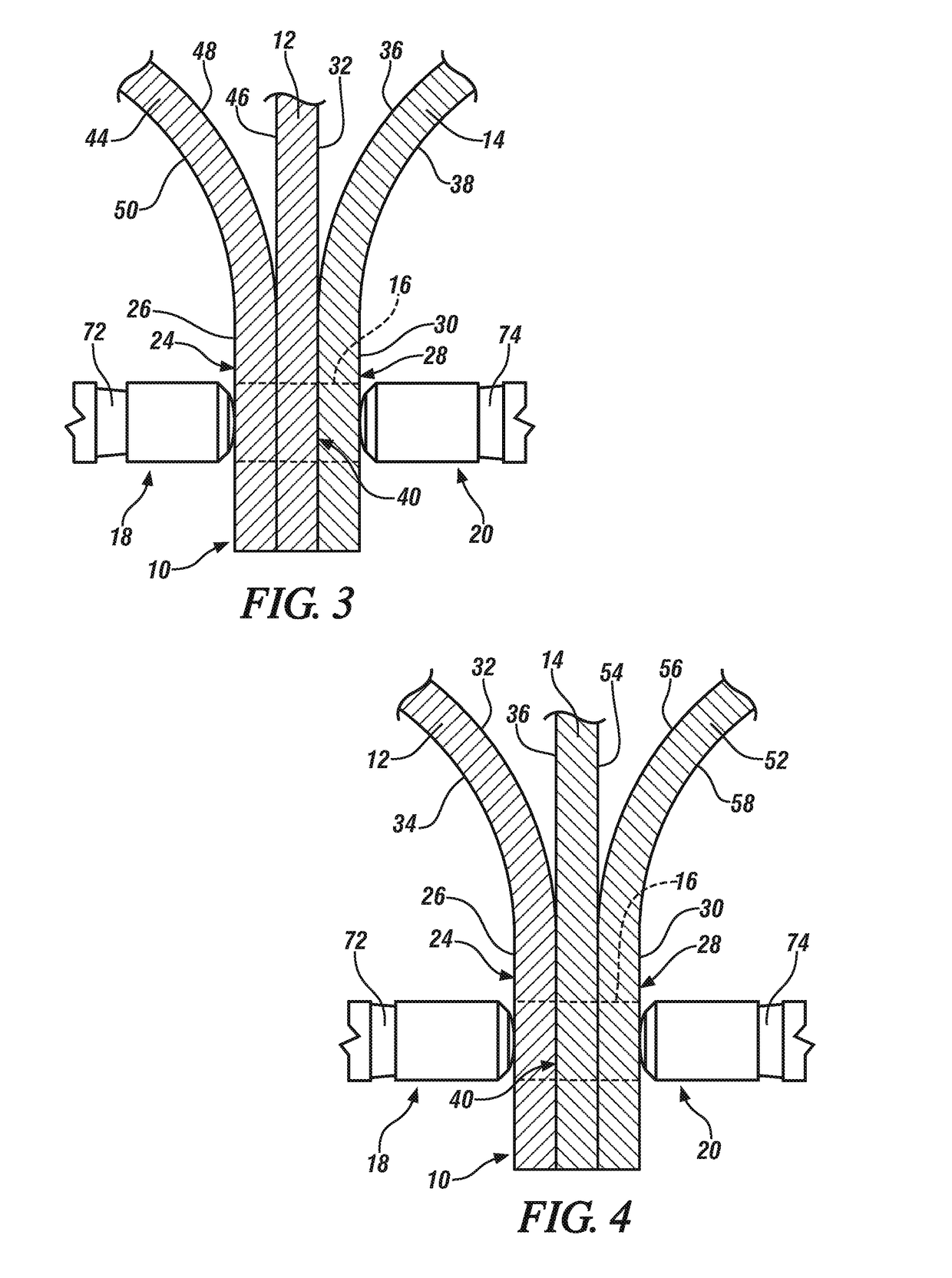External heat assisted welding of dissimilar metal workpieces
a technology of dissimilar metal workpieces and heat assisted welding, which is applied in the direction of welding apparatus, welding/soldering/cutting articles, manufacturing tools, etc., can solve the problems of difficult to effectively control and concentrate heat within the aluminum workpiece, and difficult to spot welding a steel workpiece to an aluminum workpiece. , to achieve the effect of reducing the amount of heat, enhancing the strength of the weld
- Summary
- Abstract
- Description
- Claims
- Application Information
AI Technical Summary
Benefits of technology
Problems solved by technology
Method used
Image
Examples
Embodiment Construction
[0023]The preferred and exemplary embodiment of the disclosed method of resistance spot welding an aluminum workpiece and an adjacent overlapping steel workpieces is shown in FIGS. 1-12. The disclosed method seeks to counter the heat imbalance that naturally develops between the aluminum and steel workpieces during current flow by supplying heat, when necessary, to the welding electrode located proximate to the aluminum workpiece from an external source. The introduction of external heat to the aluminum side welding electrode can be practiced in conjunction with limiting or halting a flow of coolant fluid through the electrode, if desired. By supplying heat the aluminum side welding electrode at particular times during the resistance spot welding process, the growth of the Fe—Al intermetallic layer may be inhibited and / or the solidification behavior of the molten aluminum weld pool created within the aluminum workpiece may be altered to minimize the broad dissemination of weld defec...
PUM
| Property | Measurement | Unit |
|---|---|---|
| Temperature | aaaaa | aaaaa |
| Temperature | aaaaa | aaaaa |
| Temperature | aaaaa | aaaaa |
Abstract
Description
Claims
Application Information
 Login to View More
Login to View More - R&D
- Intellectual Property
- Life Sciences
- Materials
- Tech Scout
- Unparalleled Data Quality
- Higher Quality Content
- 60% Fewer Hallucinations
Browse by: Latest US Patents, China's latest patents, Technical Efficacy Thesaurus, Application Domain, Technology Topic, Popular Technical Reports.
© 2025 PatSnap. All rights reserved.Legal|Privacy policy|Modern Slavery Act Transparency Statement|Sitemap|About US| Contact US: help@patsnap.com



